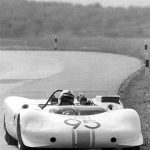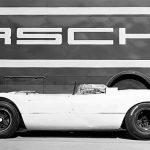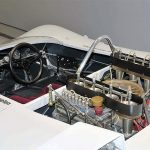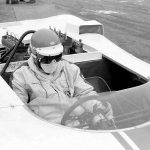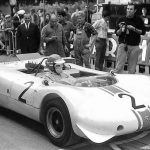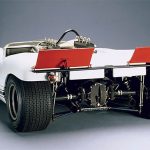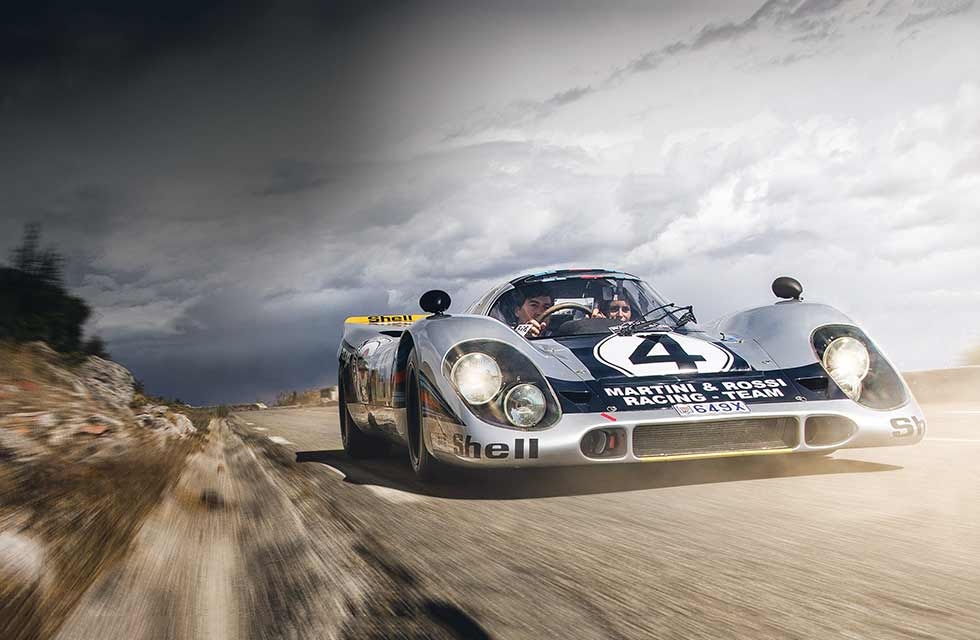
917 on the streets King of the road… Hitting the highway in a 917 – yes, that’s right, a 917… Excited! No, how about over-excited! Today, weʼre going for a drive in a 917, without a race suit or helmet. In a 917 on the open road – and legally, too! OK, so insurance costs prevent us from actually taking the wheel, but even so, as a passenger it promises to be an unforgettable experience. The owner, Claudio Roddaro, went out of his way to allow us to live this moment – itʼs impossible to know how many (or rather how few) people have had the opportunity to go for a ride in a 917, whether on road or track, so it wasnʼt an opportunity we were going to pass by! Words: Josué Chevrel. Photos: Tom Wheatley.
KING OF THE ROAD
In the history of the 917, only two previous examples have been homologated and duly registered for road use. The best known is certainly that intended for the personal use of Count Gregorio Rossi di Montelera, owner of the brand Martini & Rossi and, incidentally, the first patron of the factory team in the 1970s. When a financial partner of this calibre calls for a small automotive favour, usually the factory is quick to help out.
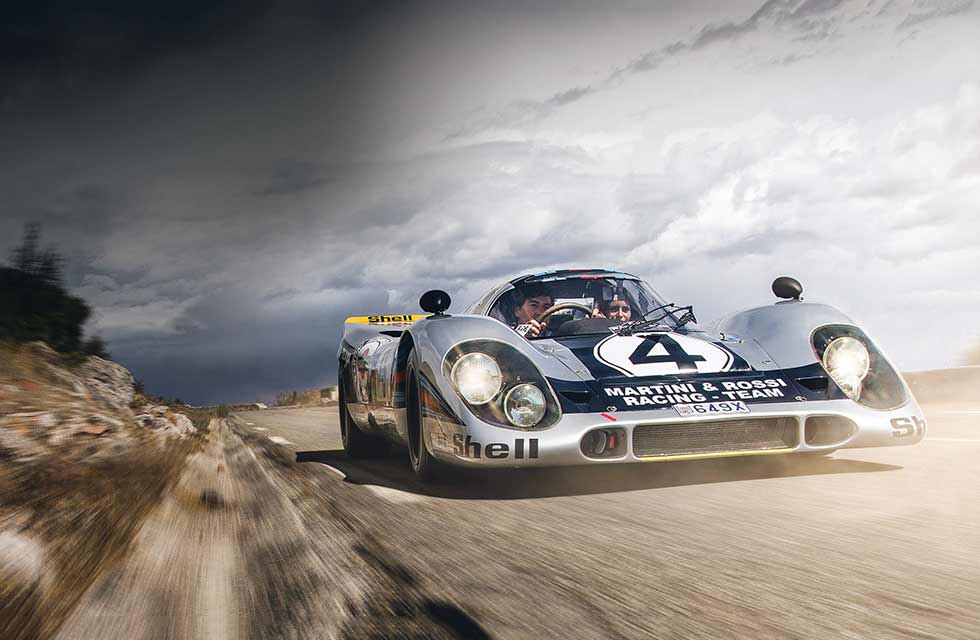
We covered the story of Count Rossiʼs car in issue #54, but itʼs worth a brief recap. In 1974, Gregorio Rossi had a desire to hit the streets in a genuine 917. Porsche looked through its inventory and ʻdiscoveredʼ one that had been gathering dust since the end of 1972. It was chassis number 917-030, a test car that only ever raced at the 1000km at Zeltweg in the hands of Helmut Marko (a few days after his victory at Le Mans) and Gérard Larrousse. It didnʼt finish the event, but it had made it possible to test the new ABS braking system in real conditions.
Because Monsieur le Comte wanted his 917 to be as close to a race car as possible, the small modifications made at Weissach intended to make the machine more ʻpracticalʼ were limited, more or less, to a muffler and a cockpit that was trimmed in leather and carpeted. It was also painted a single silver-grey colour so that it didnʼt look out of place in his collection. But nobody was fooled, certainly not the TüV…
“IN DECEMBER 2016, CLAUDIO REPATRIATED 917- 037 TO MONACO”
Gregorio Rossi turned to the authorities in Alabama (USA), who granted him a collectorʼs registration on condition that the 917 never turned a wheel in the state! The car was driven from Stuttgart to Paris the very day the Count took delivery on 27 April 1975. Still owned by the Rossi family today, 917-030 is no longer eligible for use on the public road, its last registration (in Texas) no longer valid according to American law.
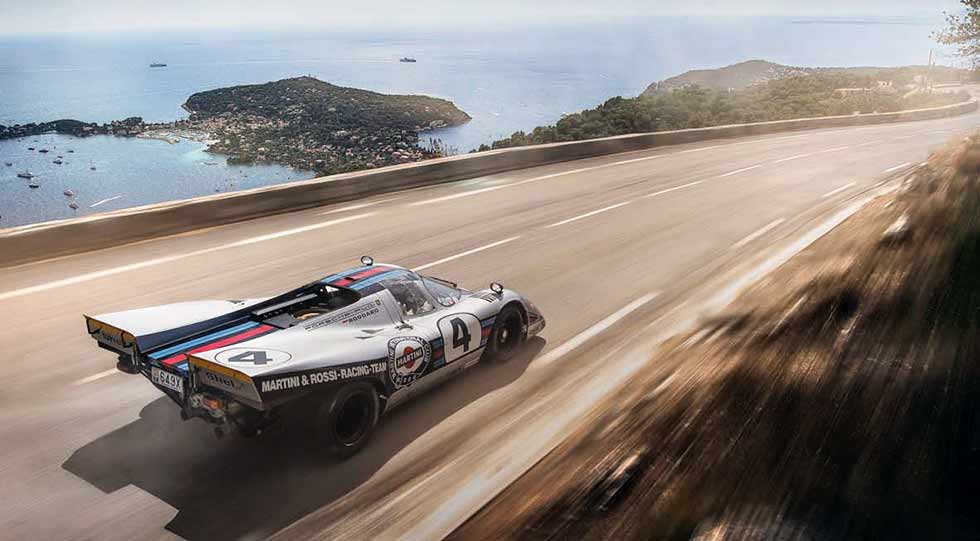
The second ʻroad legalʼ 917 bears the chassis number 917-021. Once again, this is a car which we have featured in the past (see Classic Porsche #22) but to recap, it was raced for whole 1970 season under the colours of AAW Racing. Today, it is best known for competing in historic races in its ʻhippieʼ psychedelic livery in the hands of owner Vincent Gaye. But at the end of the 1970 season, the carʼs ʻvital organsʼ were used to rebuild a 917 Spyder with which Kinnunen won the Interserie championship in 1971.
The original chassis-body assembly of #021 was sold to Manfred Freisinger in 1972 then, three years later, Joachim Großmann bought the remains for the price of a new 911. The man, a modest carpenter, worked like a madman to rebuild the 917, restoring it for the sole purpose of getting it homologated for road use by TÜV. He obtained the certificate on 3 June 1977 with the registration number CW-K917. The following owner made the decision to restore #021 back to a strictly competition configuration, and so ends the story of the second street-legal 917…
And so to our subject shown here. Claudio Rodarro has been collecting Porsches for a few years now, with a preference for Porsche racing cars, including prototypes, and preferably winning examples if at all possible. Heʼs the kind of collector for whom the 917 represents the Holy Grail, but they rarely come onto the market. When 917-037 appeared on a specialised website late in 2016, Claudio Rodarro leapt at the chance.
At first glance, #037 raises a few eyebrows. Various 917 registers list it as one of the four reserve numbers that were never assigned. A 917-037 had been recorded in the entry list for the 1970 24 Hours of Le Mans, entered by John Wyer under race number #22 for Hailwood and Hobbs, but it turns out that it was chassis 917-026 which ran under this race number.
Porsche works driver and historian Jürgen Barth sheds light on this: ʻThis #037 chassis is the last one manufactured by Bauer, who built the 917 chassis for Porsche from 1969. This chassis was not given a number before the end of production. In the 1990s, it was sold by a former Bauer employee who had acquired it from his employer. Then the chassis passed briefly through the hands of Marco Marinello (Elevenparts, in Zurich) who sold it to Carl Thompson, of Hermosa Beach in California. Thatʼs when 917-037 enters the scene.ʼ
Thompson was Race Director of famed Porsche dealer and team owner Vasek Polak for a long time; he knows the subject by heart and it is he is who undertakes the assembly of the car from the chassis and a lot of spare parts from the factory, including the twelve-cylinder engine, serial #052.
Californian specialist Kevin Jeannette of Gunnar Racing had the body moulds so agreed to build a new one. Unveiled at the Rennsport Reunion II in Daytona in April 2004, #037 in its allwhite livery was the most paradoxical 917: it is the last 917 built, and cannot boast of any wins or even any proper racing history, but it is arguably the most authentic 917 of all. Its chassis comprises all its original tubes, each in perfect condition since it never took part in a race. Ninety-five per cent of the parts used to build the car are original, a proportion which few other 917s could still boast after a single season. The body remains unrepaired, and weighs no more than it would have done originally. One man can lift the engine cover, for example, which is not the case for all 917 covers which have often been repaired many times over the years!
When the car reappeared two years later at Techno-Classica in Essen, 917-037 became the property of Manfred Freisinger, who entered Le Mans Classic the same year, entrusting the car to Stéphane Ortelli. Then, in 2011, Freisinger handed it over to American collector Greg Galdi, painted in Martini grey, before it was delivered to Laguna Seca for the Rennsport Reunion in September 2011. Since #037 does not really have any race history, Galdi started out with a blank canvas on which he had full latitude to determine the livery he would like. He chose the one featured on 917-023 on the day of its last race at Daytona.
The Martini livery was applied on the spot, while the car was still in its trailer!
In December 2016, Claudio Roddaro bought and repatriated 917-037 to Monaco. And with that came the idea (make that ʻdesireʼ) to take a tour of the Formula 1 circuit in a 917, very early on a Sunday morning when the roads are still deserted. But it wouldnʼt be possible without a licence plate and, as such, would remain a dream. Or would it? When two other cars of the same type have already been granted the necessary registration documents elsewhere in the world, itʼs theoretically a little easier to motivate the authorities in Monaco. At the very least, it would have been necessary to build a concrete file, with supporting documents of all kinds, such as FIA documents or Jürgen Barthʼs letter stating that the 917-030 driven by Count Rossi in 1975 was identical to #037 in all respects.
Claudio laughs when he remembers: ʻIn Monaco, itʼs like in France. In cases like this, they try to hang around to discourage you. Everyone passes the ball to someone else. But as Monaco is very small, the ball canʼt travel very far and is quickly passed back! It didnʼt take more than a couple of months…ʼ
Technically, a 917 is not much more than an evolution of the 908, of which some factory specimens were road-registered. They have all the lighting, including turn signals, a horn, a passenger seat and even a spare wheel. All that was required was the VIN plate, which Porsche provided!
It is thus that, with the registration documents in our pockets, we head out for an assault on the roads which overlook Monaco. But before that, weʼll have to wake up the beast from its slumbers, sitting between two 911 RSRs that seem disproportionately high. Apart from when you turn the steering wheel, pushing it by hand to pull it out of the parking lot requires no more effort than with moving a 356.
Starting the engine is quite a ritual. Itʼs not quite like a modern race car, where a team of technicians stands by, but itʼs not something you can do single-handedly, either. In the absence of Massimo, the mechanic whoʼs been looking after his ʻbabyʼ since its arrival in the collection, Matteo will follow us all day in the Scuderia Classica assistance truck. Well, you can never be too sure…
It would be too easy if the twelve cylinders could be coaxed into life with just a turn of the key when cold. You need a touch of choke – except there isnʼt one, so one mechanic has to manually operate the enrichment device on the fuel-injection, while another holds the engine cover. A third person then turns the key on the dashboard.
While the fuel pump whistles away, the starter turns over, two, three times and then the flat-12 bursts into life, spitting the occasional flame from the exhaust. It coughs and complains, itʼs violent, it punches you in the diaphragm. But itʼs alive!
The first step is to add fuel. Thereʼs nothing specifically required, and the local service station serves 98 octane petrol. You might think the size of the 917 would be a problem, but itʼs easier to manoeuvre than a 356 – and you donʼt even have to open the bonnet to fill it with fuel.
We left with the two cars for the first of a series of photos on the highway to Nice. Weʼd taken the trouble to warn the police about our intentions. Clearly, nothing can surprise them: ʻAs long as it is registered and insuredʼ was their only comment. In fact it was other motorists who were the problem: as we tried to take our photos so they wanted to take theirs from their works vans and family saloons.
Once weʼd got our tracking shots ʻin the canʼ, it was time to head off in the direction of La Corniche before the previously accommodating police began to lose their patience due to the traffic problems we were causing. The 917 is so low that the roof is only just above the level of the parapet alongside the road. But while the 917 may be so low itʼs hard to spot from another car, you canʼt fail to hear it. The throaty roar of the flat-12 resonates against the wall and fills the air with sound.
Itʼs time to take our place in the cockpit. Who said ʻcrampedʼ? The lady who previously occupied the ʻpassenger seatʼ seems to have been cut out for the role, a simple question of size that must correspond to that of the tub, the roof height and shoulder width. Iʼm afraid I donʼt enjoy the same comfort, thatʼs for sure! Climbing on board is quite simple, the sill that has to be negotiated is neither as wide nor as fragile as that of a 962. But after that it gets complicated, when I try to find a place for each of my legs as I slide to the bottom of the tub.
The chassis tubes and the dashboard are the problem – I canʼt see it, but I know that the clutch pedal is by my right ankle (Iʼm sitting on the left side) while the left is jammed against the chassis. Can we really close the door? Ouch! My shoulders are squeezed on both sides, my head against the door – I am stuck. And so much the better because, even when homologated (as a 1970 car), the passenger harness wasnʼt even on the list of options.
Claudio engaged first gear. Itʼs too late to turn back now. The 917 is a sacred monster whose reputation precedes it. There are those twelve cylinders behind my shoulders and, in #037ʼs configuration, the 4.9-litre engine produces more than 600bhp in an object that, while wet, weighs just over 600kg. Okay, with two people on board thereʼs a little extra weight, but you canʼt ignore the extraordinary power to weight ratio of 1000bhp per tonne.
Of course, thereʼs no soundproofing and what you hear from the outside is what we hear in the cockpit. As we exit the parking spot, I tuck my head into my shoulders and await the jolt…which doesnʼt come. The suspension of the 917 proves amazingly compliant, but then the car was built at a time when race tracks were far from the billiard-table smooth surfaces they are today.
The acceleration that follows is phenomenal. You feel the glassfibre of the passenger seat weaken under the g-forces which multiply your body weight, at the same time as you feel the beast coming alive. The thrust is indescribable, with nothing else to compare it to in the common automotive universe.
Claudio is more than familiar with the handling and character of the 917, and has already driven on circuits like Vallelunga, Jarama, Monza and the Nürburgring. He knows how efficiently the 917 slows down, and when you have to brake – I trust him.
This does not prevent a slight nervous twitch when a bend is fast approaching. Surely heʼs forgotten that I have neither harness nor a grab handle? The force of the acceleration is only matched by that of the braking, but to see Claudio having fun without really fighting, I have the clear feeling that the 917 is an ʻeasyʼ car to drive, even on open roads.
Itʼs the ideal way to escape to the hills above Monaco on a Sunday morning at dawn, maybe less so for longer trips. Although Claudio will admit to having gone to dinner one evening in Italy in the 917…
Below: You can spend a day doing nothing other than studying the details. The 917 is every inch a hand-built car, from the welding on the fuel filler to the hand-applied markings on each wheel. Below: You can hardly begin to imagine the sound as the 917 accelerates up into the hills above Monaco. Other road users just stopped and stared in awe… Below: The 4.9-litre engine produces more than 600bhp – more than enough in a 917 that only weighs just over 600kg ‘wet’. Below: It’s difficult to judge here, but the 917 is very small compared to most modern cars. But loud pipes and extravagant Martini livery makes it hard to ignore.
Above: Well, this is one way to save on parking and toll charges. 917 is low enough to fit under automated barriers, but feeding the cash machine is no easy task… Below: All the comforts of home. Hand-written reminder on steering wheel appears to show correct rpm for the legal speed limit… Above left: The driver’s feet were incredibly vulnerable in the event of a frontal impact, for they projected ahead of the axle centre line. Above right: Getting in and out of the 917 isn’t quick or easy – a process made all the more difficult if wearing a helmet and race suit… Below: You can’t help but wonder what’s going through the minds of the policemen. They weren’t against the car being out on the road, but were less happy by the way it brought other traffic to a halt, causing chaos… Above: It’s hard to imagine a more perfect way to experience the roads along the Mediterranean coast. The 917 proves to be easier to drive on the street than you might first imagine. Above left and right: Not what you’d expect to see every day – a 917 at the local petrol pumps, or cooling down outside the local bar… Above: We’d give anything to listen again to the soundtrack as the flat-12 motor is given free rein through the tunnels!
“IT IS ARGUABLY THE MOST AUTHENTIC 917 OF ALL…”



